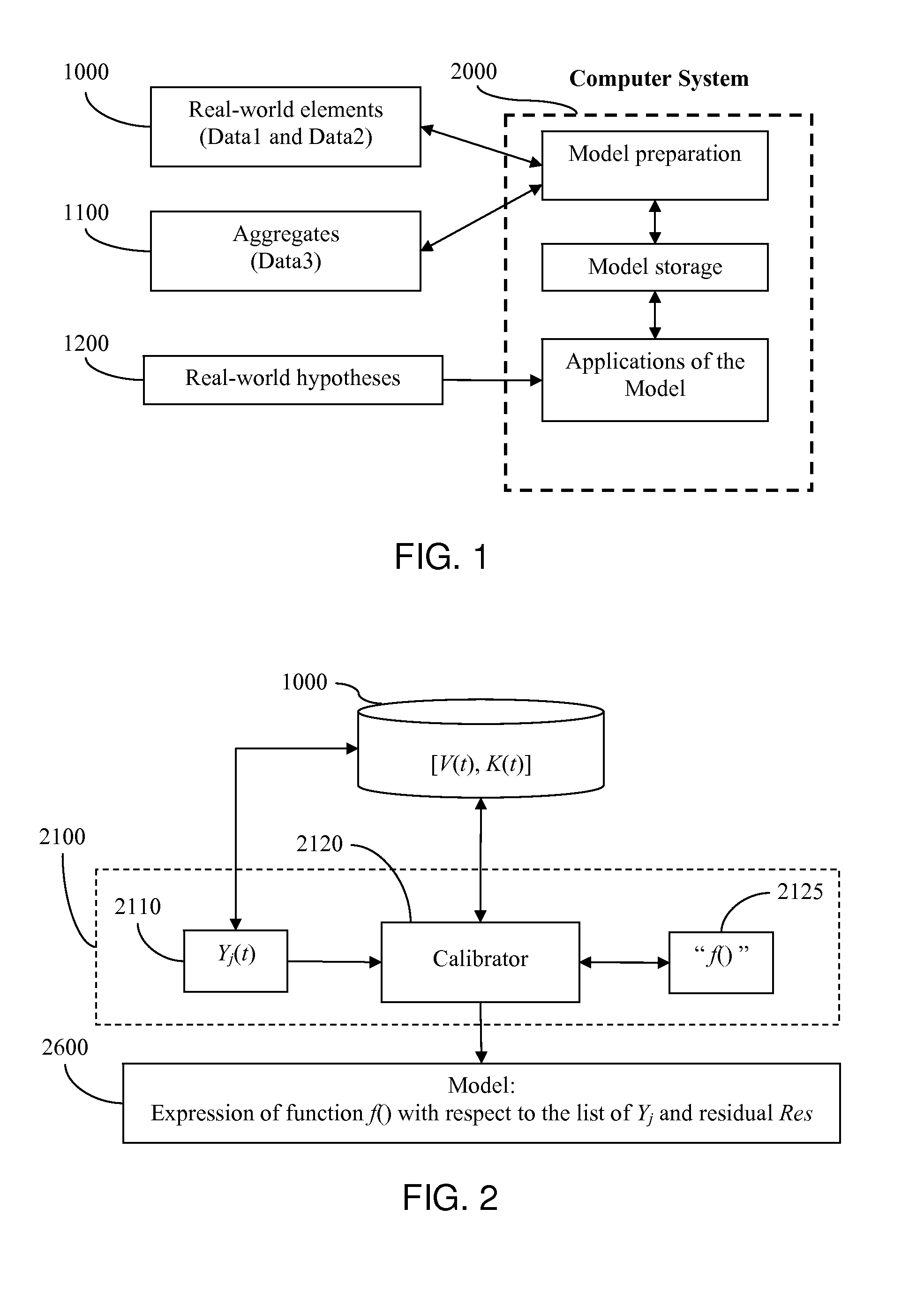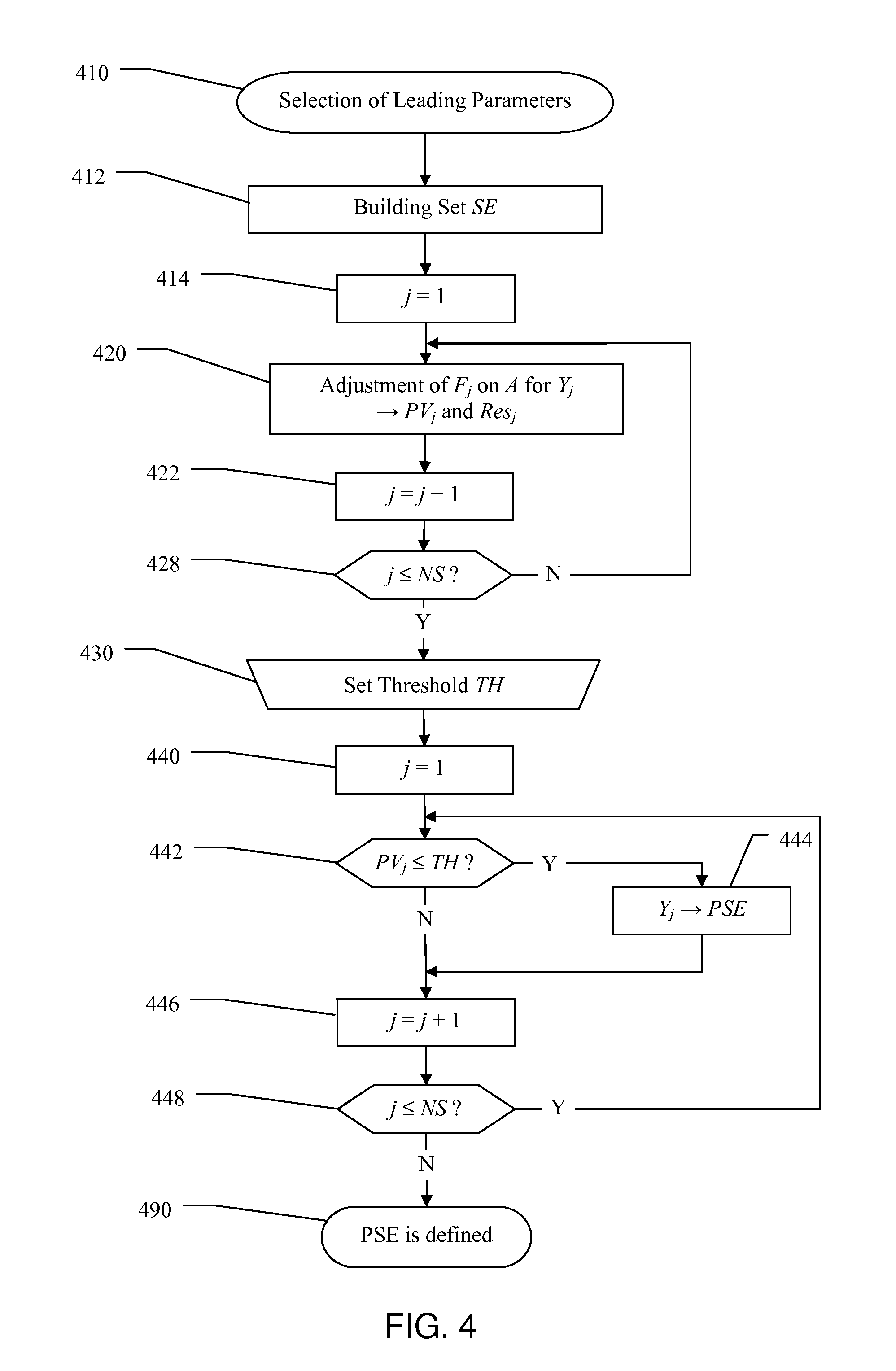The difficulty is that the number of coefficients of the model f(Y) (that which is sought) could be greater than the total number of historical data, the V(t) (that which is available).
In this case, the problem is of the so-called “under-specified” type, in other words the calibrator can produce highly different solutions in a random manner, making it rather unreliable, and hence non-utilizable.
In addition, even when the problem is not per se “under-specified”, in other words when enough historical data is available, the calibration can become numerically unstable and imprecise due to “colinearities” between the historical series of leading parameters.
In real life, these purely automatic procedures are not always totally satisfactory.
The resulting temptation is to re-calibrate the model, which often changes it completely and makes the calibration unstable.
In short, the technique is largely dependent upon the qualifications of the specialists in question, and loses its
automation.
This is called a “stress test”, the quality of which can be highly compromised if a leading parameter has been ignored.
This sort of simulation applies to complex systems, subjected to potentially highly numerous and very different sources of risks.
It follows that simulations in view of predicting the behaviors of real-world phenomena require a plurality of parameters generally hard to pin down.
However, this approach has its disadvantages.
For example, it is dependent upon the size of the historical sample in question: if too small, the simulations are not very precise, and if too big, problems of time consistency (comparison of non-comparable results, change of portfolio composition or investment strategy) are encountered.
These techniques are valid for a limited scope of application; elsewhere, their results are meaningless.
This approach, despite being often used, is clearly very limiting, because it is quite possible that the aggregate's recorded history includes no extreme situation, while they are perfectly possible.
Modeling doesn't always work as one would wish.
For a
complex system, on the other hand, it is difficult, and in some cases thought impossible, for one or more of the following reasons:scope of the
system, and corresponding complexity of the data structures, with great variability in the possible sources of risk;non-linearities and / or changes of regime, in the interactions that may occur;the modeling needs to be robust under all circumstances, including the extreme;
delay effects between the source of risk and its
observable impact on the
system;the desideratum that the modeling permit prediction, in other words reliably anticipating the behavior of the system analyzed according to movements on the leading parameters;compliance with industrial norms of risk applicable to the domain.
As we have seen, there are numerous problems:rigidity of the models, because the number of leading parameters must be limited if one wishes to avoid the difficulty of an under-specified problem;
instability of the calibration, because when two leading parameters temporarily have the same effect on the aggregate, the simulation could misunderstand their respective weights (phenomenon of colinearity);too rough an approximation, resulting in too high a value of the residue Res;poor predictive performances due to changes of regime, especially in extreme situations.
Moreover, it is not possible in any simple way to simulate the combination of several aggregates whose respective simulations use different parameters or sets of elements.
The constraint of calibration stability imposes parsimony on the models, and a limited number of leading parameters must therefore be used for each aggregate.
The choice of this limited set of leading parameters will differ for each aggregate; and it will no longer be possible to model a combination of aggregates in a homogeneous and reliable way using models of individual aggregates.
 Login to View More
Login to View More  Login to View More
Login to View More 


